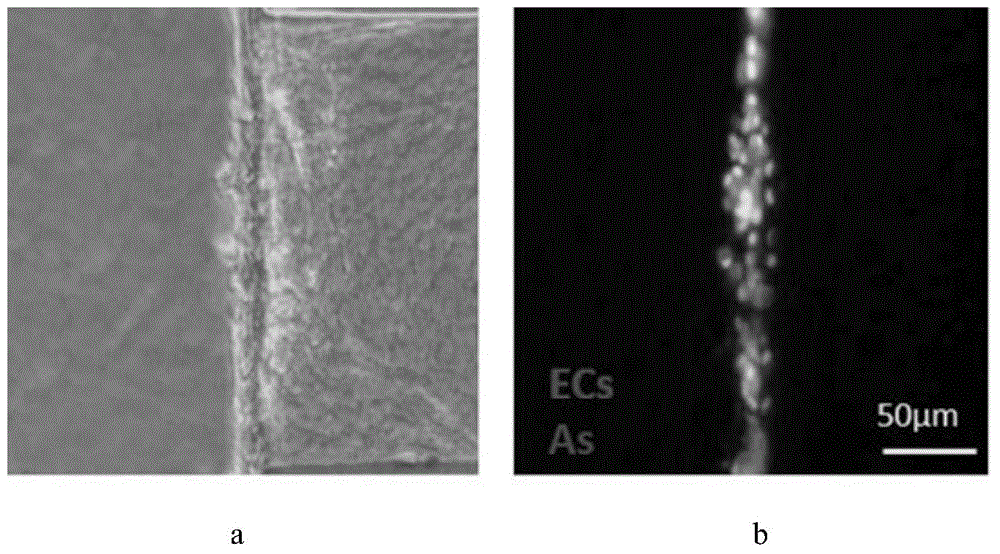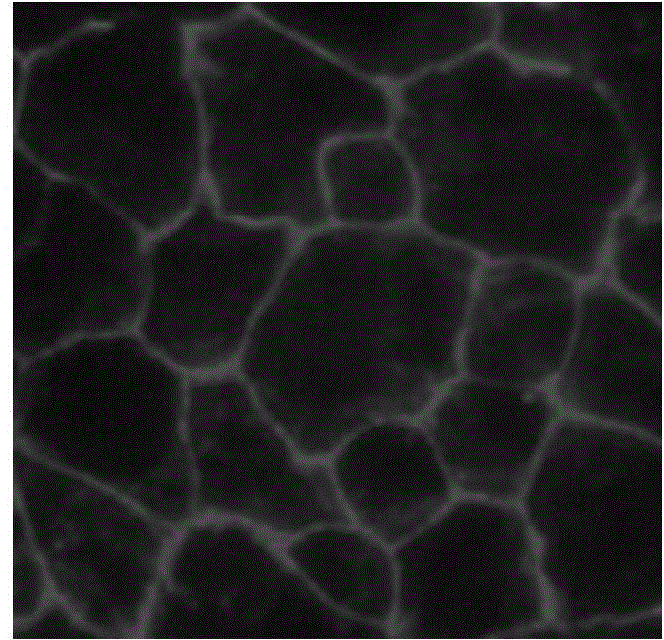Method for establishing in-vitro blood-brain barrier model based on micro-fluidic chip
A microfluidic chip and chip technology, applied in biochemical equipment and methods, artificial cell constructs, tissue cell/virus culture devices, etc., can solve the problems that new microfluidic chips have not yet appeared
- Summary
- Abstract
- Description
- Claims
- Application Information
AI Technical Summary
Problems solved by technology
Method used
Image
Examples
Embodiment 1
[0035] The primary extracted SD rat brain microvascular endothelial cells (ECs) and brain astrocytes (As) were used to form a blood-brain barrier model at the two-dimensional and three-dimensional microenvironment interface of the microfluidic chip.
[0036] Apply self-designed and fabricated microfluidic chip, the structure is as follows figure 1 shown. The prepared collagen solution with a concentration of 6mg / mL was poured into the three-dimensional channel from the collagen inlet by a perfusion pump in a continuous perfusion manner, and the culture dish with the fixed chip was placed in a 37°C culture environment to incubate the gel to form a three-dimensional structure. Then the SD rat brain microvascular endothelial cells (ECs) and brain astrocytes (As) that were extracted and cultivated to contact inhibition were respectively digested into single cell suspensions, and mixed according to the ratio of ECs:As=1:1 , use a perfusion pump to inject the mixed cell suspension ...
Embodiment 2
[0038] The resistance value of the blood-brain barrier model structure was measured by an electric resistance measuring instrument, measured once every 2 hours, and the results were as follows: Figure 4 shown. Depend on Figure 4 It shows that with the prolongation of the culture time, the function of the blood-brain barrier model is gradually improved, and the transmembrane resistance is gradually enhanced.
Embodiment 3
[0040]After establishing the blood-brain barrier model using the method in Example 1, use the perfusion pump to continuously perfuse the CellTracker solution emitting green fluorescence into the two-dimensional channel from the cell inlet, with a concentration of 10 μmol / L and a molecular weight of 557.47 Da, and continuously measure the fluorescence in the three-dimensional channel Intensity, used to characterize the barrier and penetration functions of the blood-brain barrier model to small molecules, the results are as follows Figure 5 shown. Figure 5 It shows that the blood-brain barrier model has a high barrier effect on small molecule fluorescent probes, and the permeability is low.
PUM
 Login to View More
Login to View More Abstract
Description
Claims
Application Information
 Login to View More
Login to View More - R&D
- Intellectual Property
- Life Sciences
- Materials
- Tech Scout
- Unparalleled Data Quality
- Higher Quality Content
- 60% Fewer Hallucinations
Browse by: Latest US Patents, China's latest patents, Technical Efficacy Thesaurus, Application Domain, Technology Topic, Popular Technical Reports.
© 2025 PatSnap. All rights reserved.Legal|Privacy policy|Modern Slavery Act Transparency Statement|Sitemap|About US| Contact US: help@patsnap.com



